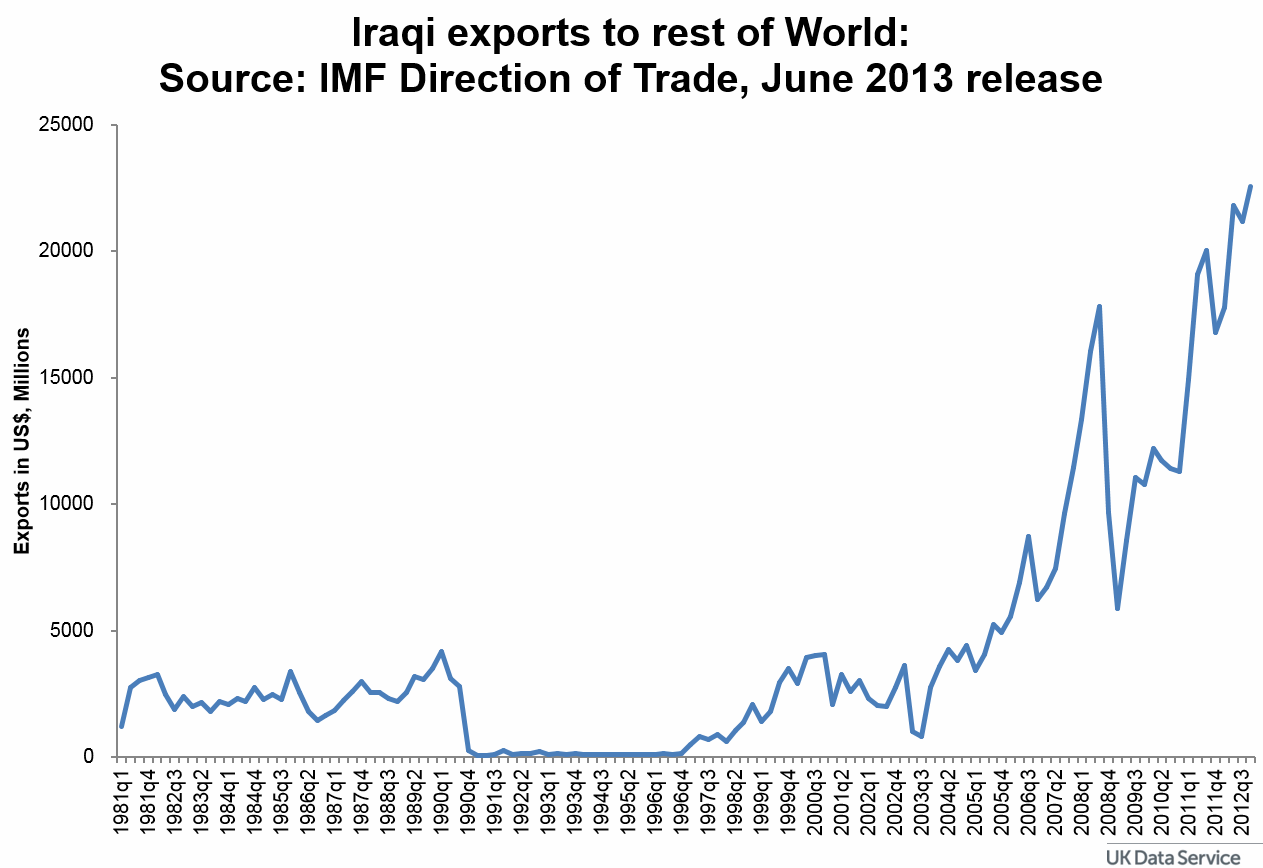Iraq's trade with the rest of the world reflects the country's recent volatile history. The costly and inconclusive war with Iran depressed trade throughout the 1980's. After hostilities ended in 1988, imports and exports recovered briefly, but then fell sharply after the invasion of Kuwait and the imposition of sanctions following the Gulf war. The data shows trade started to increase after the implementation of the UN's oil-for-food program beginning in December 1996, under which Iraq was allowed to export limited amounts of oil in exchange for food, medicine and other basics.

Oil is by far Iraq's major export. We can see the drop in exports between the first and second quarters of 2003 following the US-led invasion in March when the pipelines were destroyed and then the rise again as the pipeline were fixed. These data are from the Jan 2013 release of the International Monetary Fund's Direction of Trade, which contains data running up to the middle of 2012. The database is updated every month.